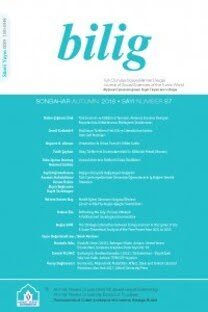I. Dünya Savaşı'nın Hong Kong'daki Son Osmanlı Tebaasına Etkileri
19. yüzyıl ortalarında İngiliz hâkimiyetine giren Hong Kong, Osmanlı Devleti'nin siyasi, askerî, coğrafi açıdan nüfuz alanında değildi. Osmanlı Devleti'nin resmen savaşa girmesiyle neredeyse aynı günlerde adanın İngiliz valisine merkezden gönderilen yazılar çerçevesinde alınan tedbirler, savaşın devamı müddetince tıpkı Alman siviller gibi adada yaşayan Osmanlı tebaasına yönelik kuşkuları ve ilan edilen "cihad-ı ekber"in muhtemel etkilerini ortadan kaldırmak üzerine kurulmuştu. Yapılan tahkikat neticesi hazırlanan rapora göre adada 27 yetişkin erkek vardı. Bunlardan beşinin eşi olduğu not edilmişti ve 27 erkekten dördünün toplam 20 çocuğu vardı. Buradan hareketle bu ilk tahkikatta erkek, kadın ve çocuk olmak üzere 52 kişi "Osmanlı" tebaası olarak listelenmişti. Kayda geçen erkeklerin isimleri ve doğum yeri kayıtlarına göre bunlardan birinin Türk ve Müslüman, birinin Suriye kökenli, ikisinin muhtemelen Rum kökenli Hristiyan olduğu anlaşılmaktadır. Listede geriye kalan 22 erkeğin Bağdat asıllı Museviler olduğu görülmektedir. Adadaki Osmanlı tebaasının genel itibariyle ticari kaygılarla buraya gelmiş ya da "rahip" olarak nitelendirilmiş oldukları tahkikattan anlaşılmaktadır. İngiltere'nin "Panislamik propaganda" algısı ile yaptığı soruşturmada listelenen Osmanlı tebaasının yukarıda sözü edilen etnik-dini dağılımına rağmen savaşın devamı müddetince gözlem altında tutulması, sınır dışı edilmesi ya da seyahatinin belirli süre engellenmiş olmasında İngiltere'nin tehdit algısının "Osmanlı pasaportu taşıyanlar" noktasında toplanmasının etkili olduğu görülmektedir
The Effect of World War I on the Last Ottoman Citizens in Hong Kong
Hong Kong, which was brought under British sovereignty in the 19th century, was not under the Ottoman Empire's political, military and geographic influence. Shortly after the Ottoman Government joined World War I, in an effort to counter the effects of the recently proclaimed "holy war [jihad]", some precautions were taken in accordance with the orders sent by the British Government to the British governor of the island, and the Ottoman residents fell under suspicion just like the German civilians during the war. However, inquiries showed that almost all of the "Ottoman" subjects residing on the island were Jewish and Ottoman citizens who had come to the island for trade purposes. However, those who carried Ottoman passports were kept under strict surveillance and deported throughout the war. The British report suggested that there were 27 adult males, 5 married, and 4 of the 27 having a total number of 20 children. This first investigation suggested that a total of 52 Ottoman citizens, men, women and children were listed in Hong Kong. The list indicated that one out of 27 males was of Turkish and Muslim origin, another of Syrian origin, two possibly of a Greek Christian background while the rest of the 22 males were Baghdadi Jews. The investigation indicated that the Ottoman population of Hong Kong was most likely present there for trade or religious purposes. Despite the ethno-religious demographic breakdown of the Ottomans, which was suggested by the British report prepared with the preception of an Ottoman 'Panislamic propaganda', Great Britain's traditional perception of threat regarding 'individuals carrying Ottoman Citizenship' was a major motivation behind keeping the Ottomans under observation throughout the war, banning their right to travel for a certain period of time and deporting them out of the country.
___
- Arşivler
- Başbakanlık Osmanlı Arşivi
- BOA, DH.EUM., 2. Şb., 2/39. BOA, DH.ŞFR, 52/82.
- BOA, DH.EUM.KLU., 9/12.
- BOA, DH.İUM.EK, 65/34.
- BOA, HR.SYS., 2248/49.
- The National Archives, Kew-Londra/İngiltere CO, 323/670/75.
- FO, 141/462/4,
- FO, 371/2482.
- FO, 383/33.
- FO, 383/88. İnceleme Eserleri
- Betta, Chara (2003). "From Orientals to Imagined Britons: Baghdadi Jews in Shanghai". Modern Asian Studies 37 (4): 999-1023.
- Dumont, Paul (1994). "Jews, Muslims, and Cholera: Intercommunal Relations in Baghdad at the End of the Nineeteenth Century". The Jews of the Ottoman Empire. Princeton, New Jersey: Darwin Press.
- Endacott, G.B. (1964). Government and People in Hong Kong 1841- 1962, A Constutional History. Hong Kong: Hong Kong University Press.
- Fairbane, J. R. (1940). "Chinese Diplomacy and the Treaty of Nanking 1842". The Journal of Modern History XII/1:1-30.
- Keleşyılmaz, Vahdet (1999). Teşkilat-ı Mahsusa'nın Hindistan Misyonu (1914- 1918). Ankara: Atatürk Araştırma Merkezi Yay.
- Khan, Arshi (1999). "Osmanlı İmparatorluğu: Çok Kültürlülüğün Doğulu Mimarı". Osmanlı. C. IV. Ankara: Yeni Türkiye Yay. 229-235.
- Kurtcephe, İsrafil ve Mustafa Balcıoğlu (1992). "Birinci Dünya Savaşında Ro- mantik Bir Türk- Alman Müfrezesi: Rauf Bey Müfrezesi", OTAM. S. 3. Ankara: Ankara Üniversitesi, Dil Tarih Coğrafya Fakültesi Yay. 247-269.
- Özcan, Azmi (1997). Pan-İslamizm Osmanlı Devleti Hindistan Müslümanları ve İngiltere (1877-1924). İstanbul: İsam Yay.
- Özuyar, Ali (2008). Modern Tarihin İlk Sivil Esir Kampı, Knockaloe ve Meçhul Türkler. İstanbul: İş Bankası Kültür Yay.
- Rabinowicz, H.(1966). "The Sassoon Treasures". The Jewish Quarterly Rewiew, New Series, 57/2: 136-153.
- Jackson, Stanley (1968). The Sassoons. London: Heinemann.
- Lo, C.P. (1992). Hong Kong. London: Belhaven Press.
- Tural, Erkan (2008). "II. Meşrutiyet Dönemi'nde Adliye ve Mezâhip Neza- ret'inde Bürokratik Reform". Ankara Üniversitesi Hukuk Fakültesi Dergisi 57/2: 223-252.
- Weslwy- Smith, Peter (1980). Unequal Treaty 1898-1997, China, Great Britain and Hong Kong's New Territories. Hong Kong, New York, Melbourne: Ox- ford University Press.
- ISSN: 1301-0549
- Yayın Aralığı: Yılda 4 Sayı
- Başlangıç: 1996
- Yayıncı: Ahmet Yesevi Üniversitesi Mütevelli Heyet Başkanlığı
Sayıdaki Diğer Makaleler
Türk Edebiyatı İsimler Sözlüğü Projesi
A Sectoral Analysis of Hysteresis in Unemployment: Evidence from Turkey
Mehmet ÇINAR, Feridun YILMAZ, Hülya Kanalıcı AKAY
Atatürk and the Turkish Terminology Reform: The (Re-)turkification of Geography Terms?
Realpolitik and Jihad: Najm al-Din Ilghazi's Relations with the Early Crusader States
The Legal Foundations of the Commercial Relations between The Ottomans and Neapolitans
Realpolitik and Jihad: Najm al-Din Ilghazi's Relations with the Early Crusader States
I. Dünya Savaşı'nın Hong Kong'daki Son Osmanlı Tebaasına Etkileri
The Uyghur Diaspora in Cyberspace: Identity and Homeland Cause
